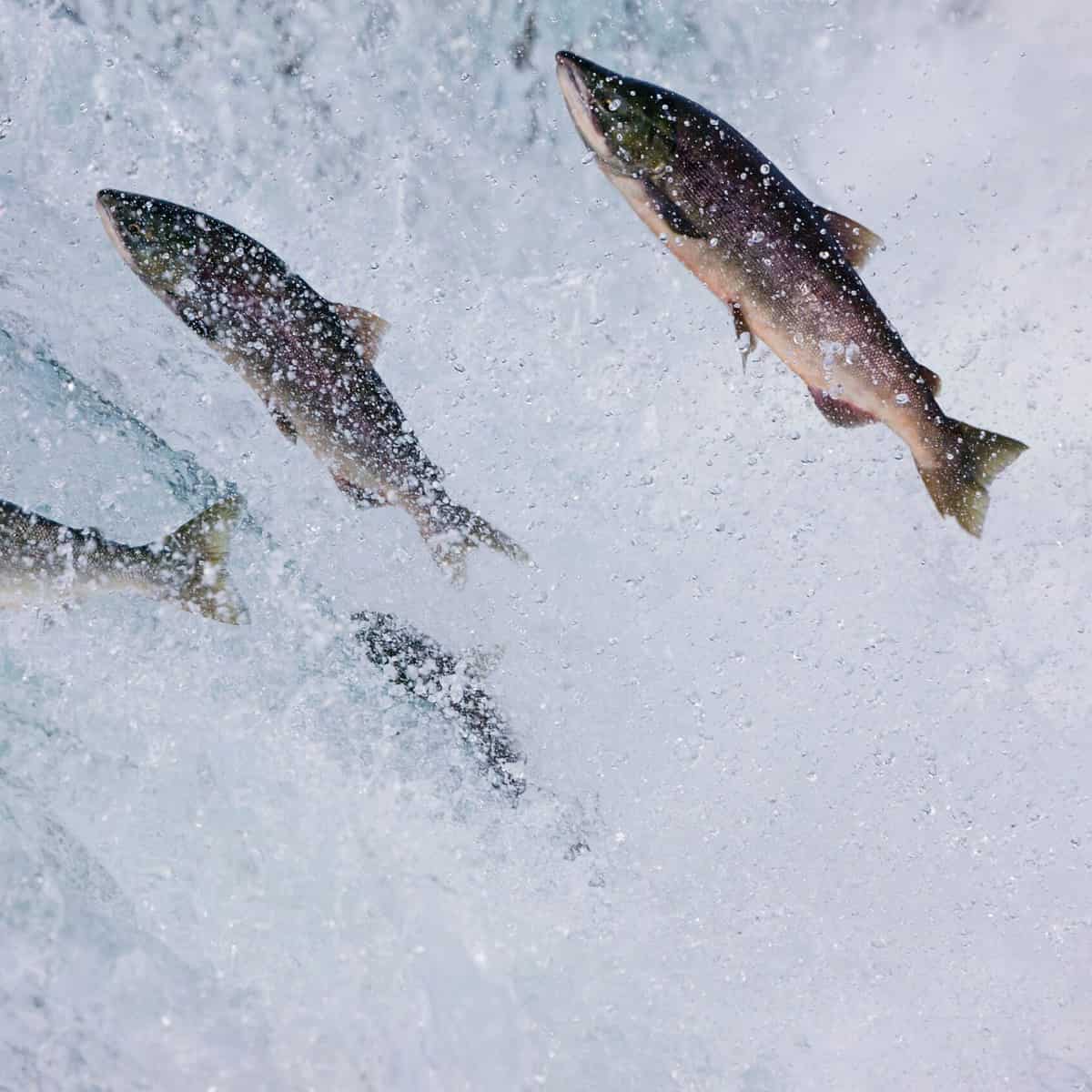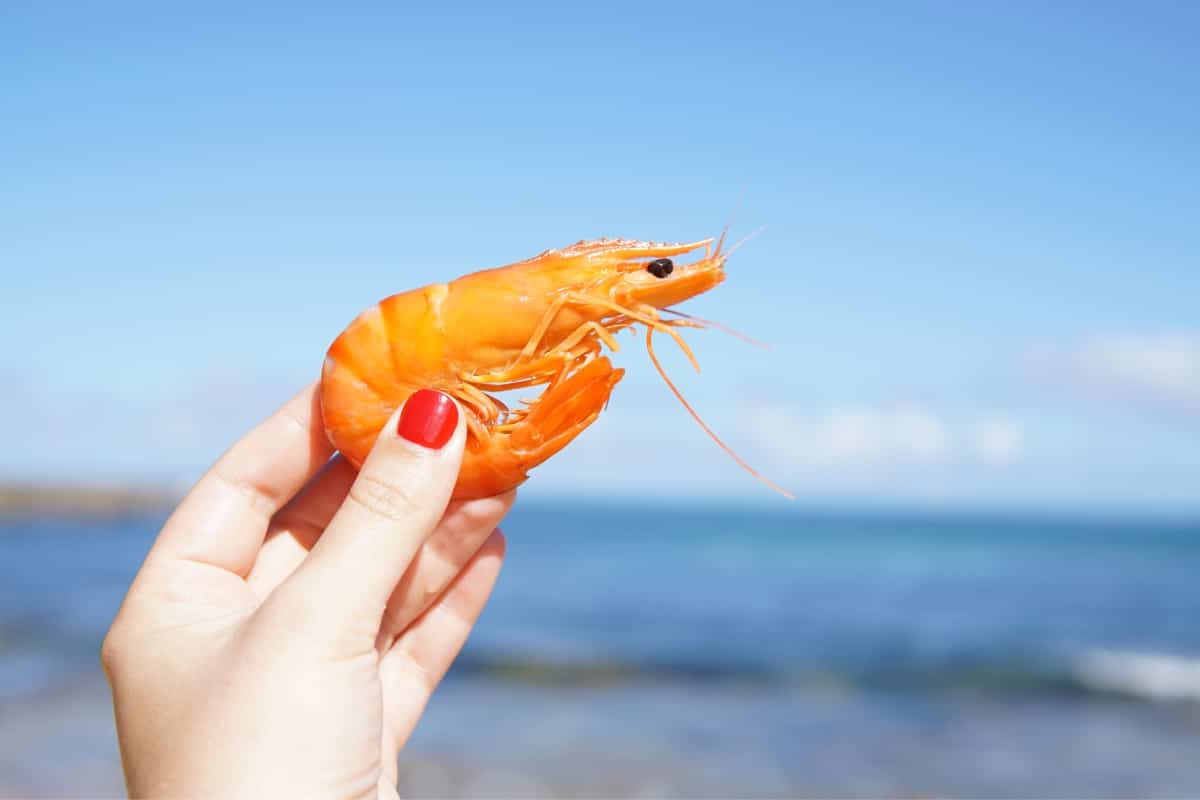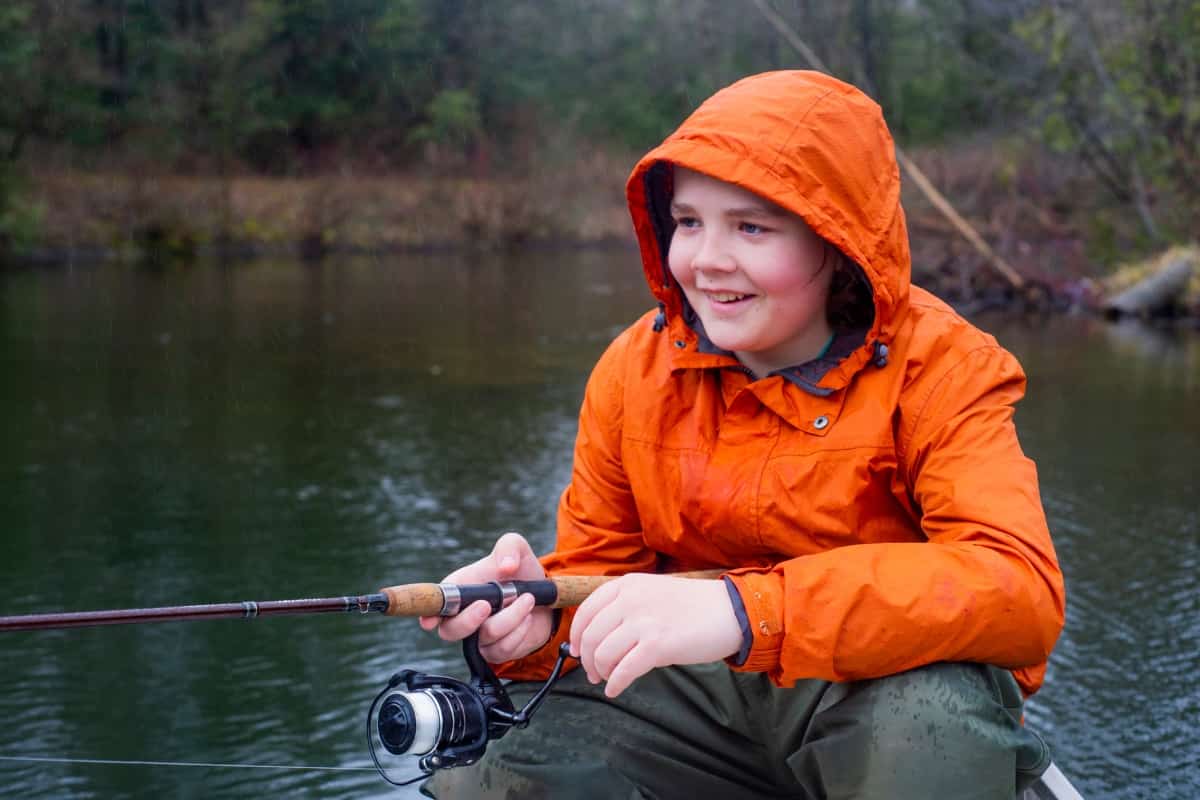What’s the difference between steelhead and salmon? This is quite a complicated topic as there are many misconceptions surrounding steelhead. In this article, fly fishing expert, Daniel O’Neill, with over one hundred salmon landed in the 2022 season, dives into the key differences between steelhead and salmon.
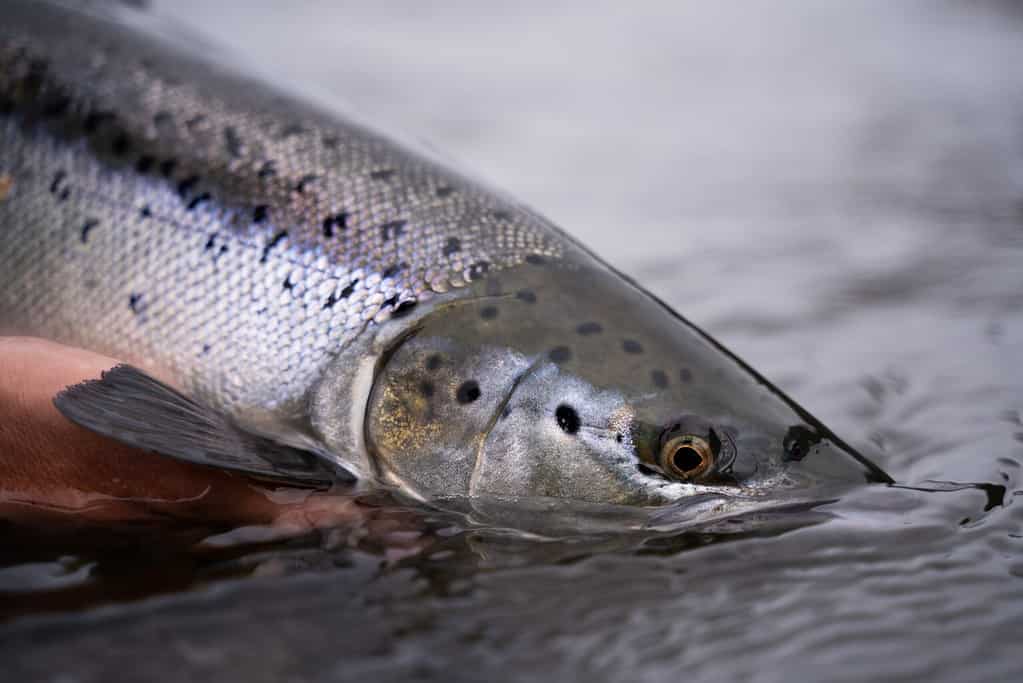
When discussing the topic of steelhead I continually hear beginner anglers get confused between steelhead and salmon. I think there’s many factors that add to this complication. Both salmon and steelhead have very similar life cycle patterns, they both inhabit the same habitats and they have a fairly similar appearance.
Coloration patterns also contribute to the confusion between steelhead and salmon. Salmon exhibit color changes throughout their life cycle, which can resemble the appearance of a steelhead when they have freshly arrived from the sea.
Furthermore, there are some regional naming differences. Some anglers refer to steel heads as sea trout or salmon trout. This adds to the misunderstanding between the two species. So what is the difference between steelhead and salmon?
The Short Answer
To put it simply, steelhead are a trout and have no relation to salmon. Steelhead are a unique form of rainbow trout, they are born in streams, migrate to the sea and return once they have matured. Salmon also have a similar life cycle, traveling to the sea to mature and returning to freshwater to spawn. Regardless of their similarities, these are two separate fish species and although they both have similar life cycles it is their biological features that set them apart.
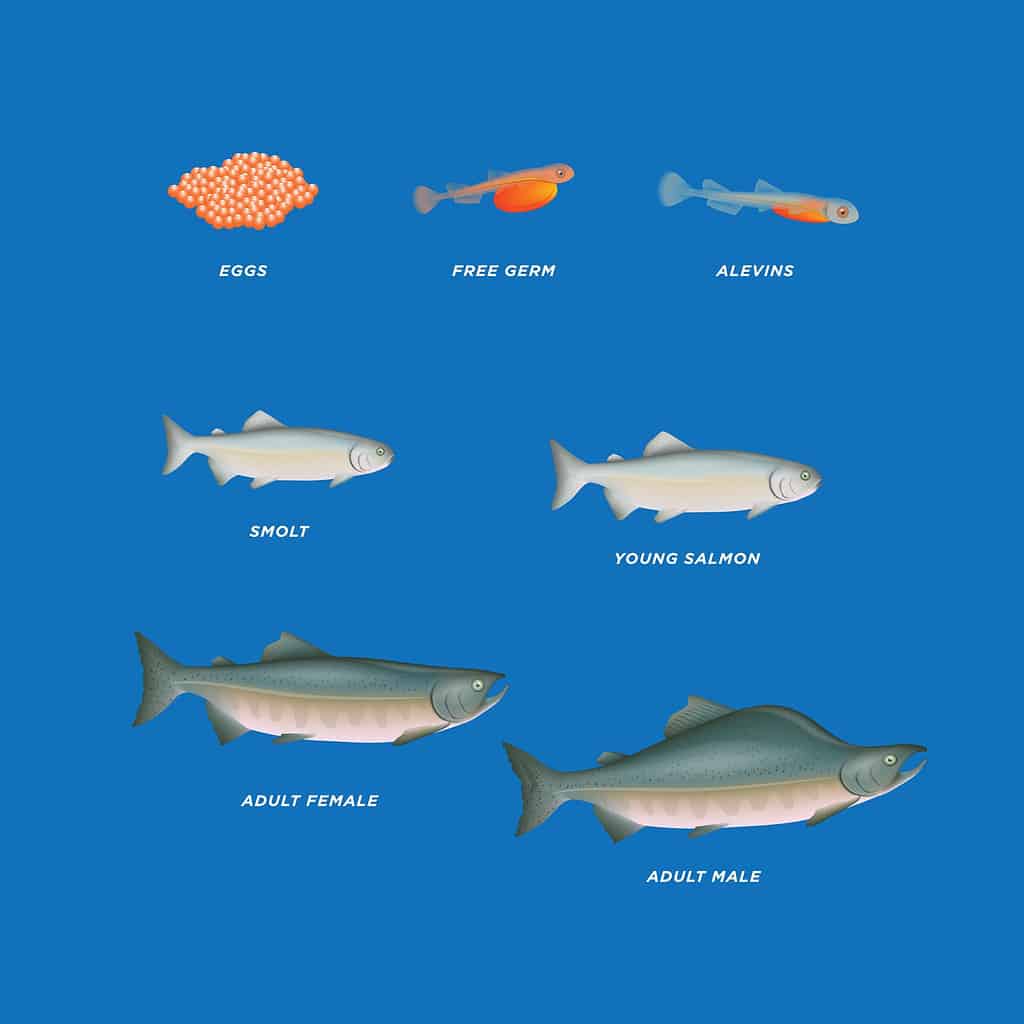
The Long Answer
To really understand the differences between the salmon and steelhead we must have a look at their physical appearances. Salmon tend to have larger scales than steelhead, depending on the species, red, green and brown are common salmon spawning colors. Whereas, hues of silver and blue are more commonly seen in steelhead.

Salmon have many physical alterations when they prepare to spawn. Unlike steelhead they develop a hooked jaw, known as a “kype,” and change coloration to attract mates. This hooked jaw is used as a defensive mechanism in territorial disputes with other male salmon during their breeding season. It should be noted that sea trout do not have the same alterations when spawning.
If a steelhead does not migrate to the sea at any point in its lifecycle it is considered a rainbow trout not a steelhead. Therefore, all the steelhead that were added to the Great Lakes, often referred to as steelhead are actually rainbow trout considering they do not migrate out to the ocean.
Behavior Differences
Both salmon and steelhead belong to the same Salmonidae family, however there are many differences seen between the two species. Salmon typically have a much shorter lifespan than that of a steelhead. Depending on the species of salmon, after spawning they tend to pass away, however steelhead will repeat their life cycle until dying of natural causes.
Steelhead are well known for their ability to migrate very long distances, whereas salmon have more powerful homecoming instincts. Usually salmon will return to their birthplace to spawn. When I fish for salmon we target them while they are returning to spawn up rivers. The specific species of salmon I target is the Atlantic salmon. The Atlantic salmon does not pass away after spawning, like steel heads they return to the ocean and repeat their migration pattern each year.
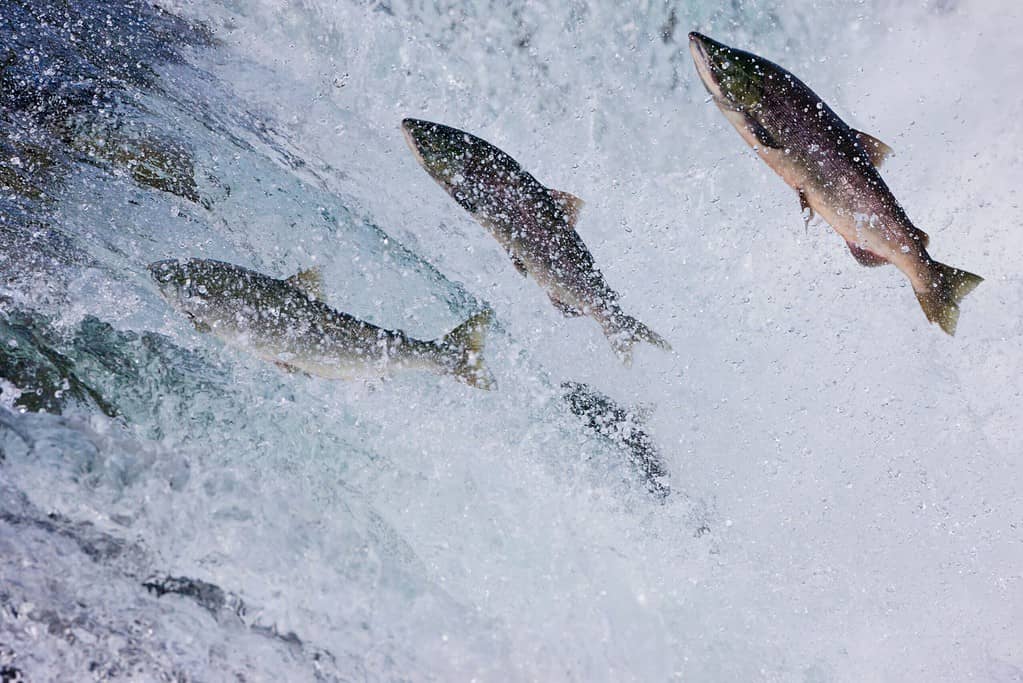
Steelhead usually have a higher tolerance for warmer waters than that of a salmon, so it is more likely that you’ll catch steelhead in warmer climates than salmon. Furthermore, the size difference between male and female salmon is very pronounced. When fishing for salmon I find it very easy to identify the difference between a cock and a hen fish solely based on their size, shape and facial structure. Steelheads do not have any major differences between male or females.
From my experience I feel that steelhead are generally more cautious and elusive compared to salmon. Salmon can be quite aggressive towards bait, whereas steelhead will not strike as quickly. Salmon tend to display more aggressive feeding behavior, especially during their time in the ocean.
Salmon typically have a higher growth rate during their time in the ocean compared to steelhead. Salmon are more likely to congregate in large schools during their oceanic migration, while steelhead travel as individuals or in smaller groups. I have had the pleasure of targeting salmon at sea. When one salmon is hooked everyone on the boat casts in the general direction of that fish. On some occasions other anglers also hook into the same shoal of fish.
Physical Attributes
It is very common for anglers to get conflicted over correctly identifying the difference between a salmon and a steelhead. Their appearances in some instances can be strikingly similar. Salmon typically have torpedo shaped bodies whereas steelhead have a more elongated body.
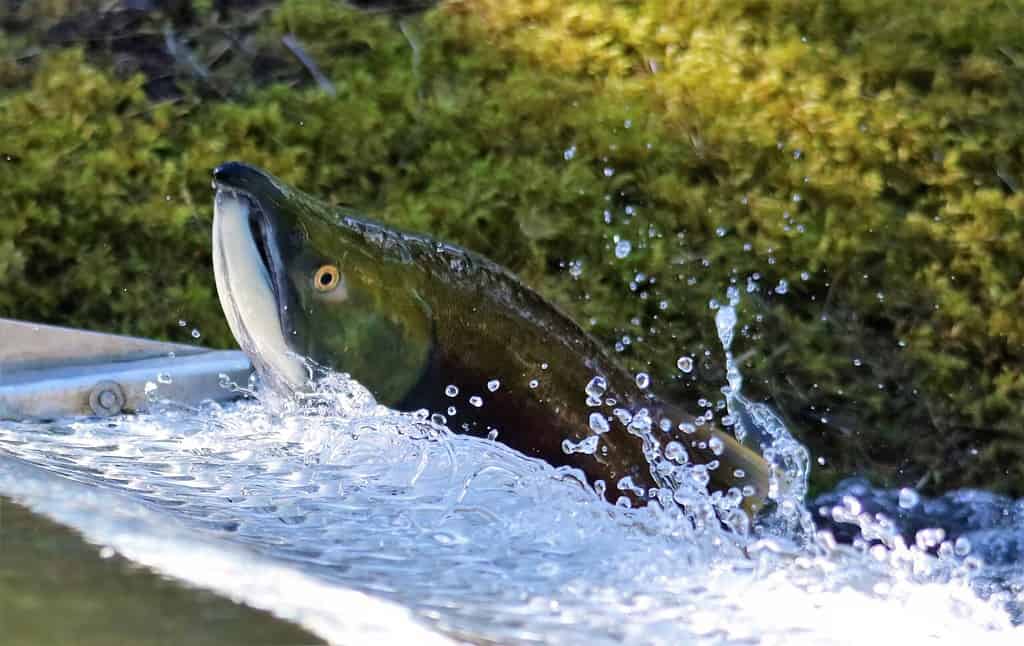
Salmon tend to have more pronounced speckling along their sides, and fins, while steelhead may have more subtle or fewer spots. Steelhead have a thinner and more pointed snout compared to salmon as well as smaller scales. Steelhead usually exhibit a pronounced tail compared to salmon. A salmon’s tail is usually v-shaped whereas a steelhead’s tail is more blocky and squared off.
Habitat Preferences
Salmon and steelhead prefer different habitats. As covered previously, steelhead can withstand warmer waters than most salmon species. Salmon are much better at adapting to saltwater than steelhead. However, steelhead have the ability to live within freshwater for much longer periods of time than salmon. Most salmon species tend to only remain in freshwater while spawning before dying or returning to the sea.
Salmon require well-oxygenated water for effective spawning, whereas steelhead can tolerate warmer water, smaller tributaries, and slightly less pristine conditions. Both species can be found in deep pools along the riverbanks. This information is crucial when targeting either species. Local knowledge of the river, including the location of salmon pools, has been instrumental in my successful fishing trips. This understanding allows me to strategically drift my bait or fly across the pool, increasing the likelihood of a strike.
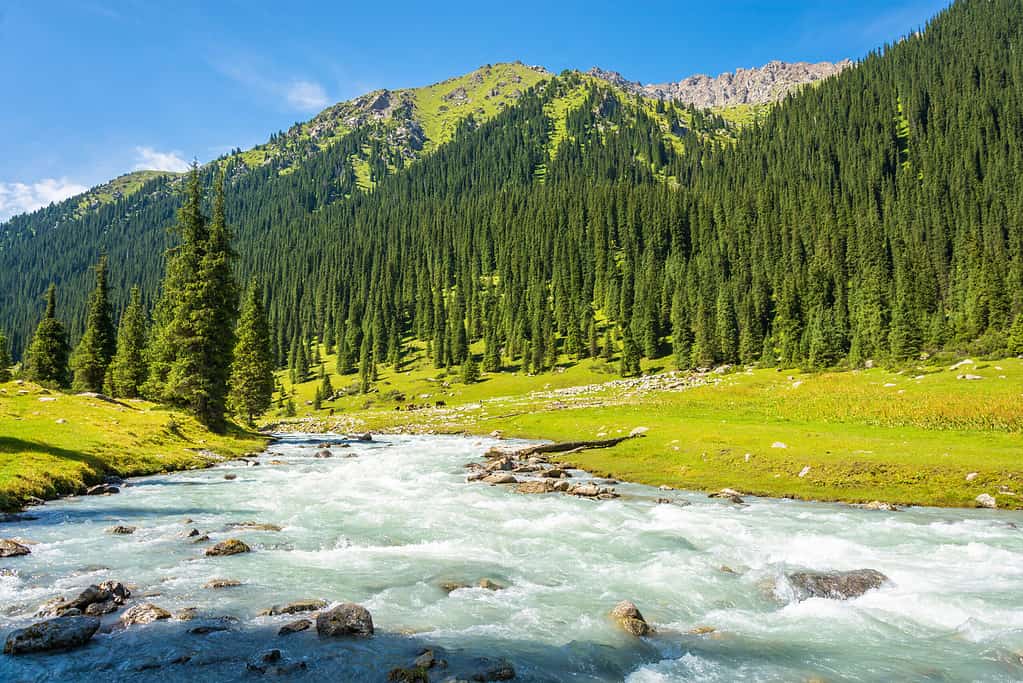
FUN FACT: Steelhead are a native fish to North America, but have also been introduced to every other continent in the world, with the exception of Antarctica.
Like almost all game fish, salmon and steelhead will hide around structure. Structure such as fallen trees, reeds or large rocks will provide security for the fish and hopefully deter any predators from finding them. This is also important to acknowledge when targeting these species. A large fallen tree or sunken object is the perfect opportunity to cast over and allow your bait to be drifted downstream in hope of a bite.
It is important to note that salmon and steelhead habitat preferences can vary based on the specific species, the region, population density and life stage of the fish.
Final Thoughts
It can be easy to get confused when trying to tell the difference between salmon and steelhead. I personally find that the easiest way to tell the difference is to look at the tail. A v-notch tail is more prominent in salmon, whereas the tail of a steelhead is much more blocky. This article has extensively covered the differences between steelhead and salmon as well as some helpful tips and angling misconceptions. Good luck and tight lines.


 Facebook
Facebook YouTube
YouTube
